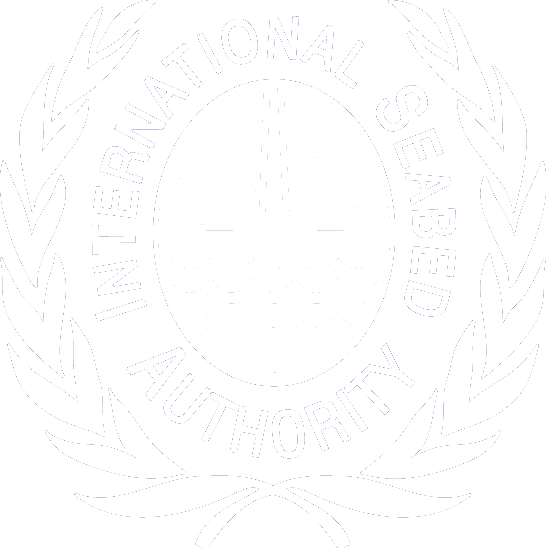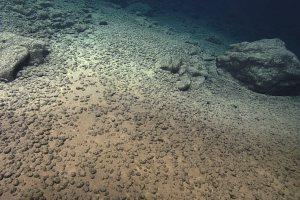Minerals: Polymetallic Nodules
Polymetallic nodules occur abundantly as 2D deposits at the unconsolidated sediment-water interface, while they could also be scantly buried in sediments at different layers. They occur in different sedimentary environments, shallow waters and lakes. The deposits of economic importance, however, occur mostly at 4,000-6,000 meters depths in areas of extremely low sedimentation rate. Nodules require a nucleus to start forming. This nucleus could be anything, varying from a piece of pumice, a shark tooth, an old nodule piece, basalt debris or even microfossils like radiolaria and foraminifera. The enrichment of metals around the nucleus takes place either hydrogenetically by the precipitation of metals from the seawater or through release from the interstitial spaces between the underlying sediments, by early digenetic process or by a combination of both. Nodules from the topographically smooth areas of the abyssal plain with an abundance of >5 kg/m2 and a combined >2 % grade (Cu, Ni and Co) form a sound economic proposition. They are found in about a dozen morphological types, such as spheroidal to discoidal.
A conference, “Ferromanganese deposits on the Ocean Floor,” organized at the Lamont – Doherty Geological Observatory in January 1972 and sponsored by the International Decade of Ocean Exploration, gave a considerable stimulus to the development of an incipient nodule mining industry.
Following the adoption of the Regulations on Prospecting and Exploration for Polymetallic Nodules in the Area, in July 2000, ISA entered into exploration contracts with seven contractors: the Government of India, Deep Ocean Resources Development Co. Ltd. (Japan), Institut français de recherche pour l’exploitation de la mer (France), JSC Yuzhmorgeologiya (Russia), China Ocean Mineral Resources Research and Development Association (China), Interoceanmetal Joint Organization and the Government of the Republic of Korea from 2001-2004. In addition, it entered into exploration contracts with 11 others after 2005: Federal Institute for Geosciences and Natural Resources (Germany), Nauru Ocean Resources Inc. (Nauru), Tonga Offshore Mining Limited (Tonga), Global Sea Mineral Resources NV (Belgium), UK Seabed Resources Ltd. (UK), Marawa Research and Exploration Ltd. (Kiribati), Ocean Mineral Singapore Pte. Ltd. (Singapore), UK Seabed Resources Ltd.-ll (UK), Cook Islands Investment Corporation (Cook Islands), China Minmetals Corporation (China) and Beijing Pioneer Hi-Tech Development Corporation (China).
Polymetallic nodules contractors


